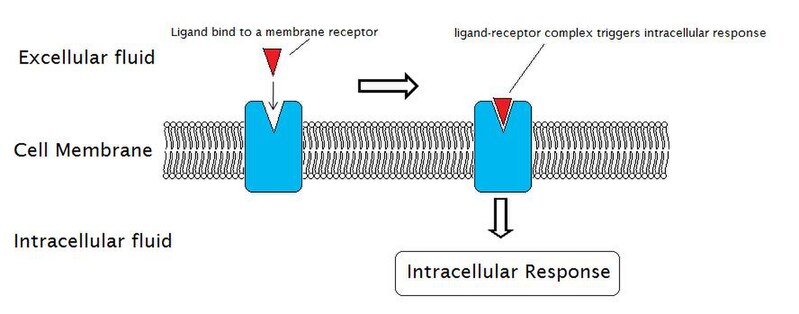 Daily Newsletter
Daily Newsletter
September 18, 2012 Basics of Cell Communication
Cells must be able to sense their environment, and respond to environmental stimuli. Cells must have some mechanism to receive environmental signals, and process those signals into a response. All cells, prokaryotes and eukaryotes have this ability. Beyond just responding to the environment, we now know that cells, even bacteria and archaea, possess the ability to signal each other. In multicellular organisms, we will talk about the coordination of metabolism and growth using chemical signals. In humans, from the embryo stage til death, are cells are constantly talking to each other.
Signal reception occurs in all known organisms (from picking up environmental to cellular signals). For instance, in bacteria, we know of a signal phenomena known as Quorum Sensing. With this signal system, bacteria release chemicals as they grow which other individuals of the same species (and some times other species) pick up; when the concentration of the chemical reaches a critical point, cellular changes can be observed in the community. Basically, as the population increases, cells begin to change.
But how do cells pick up signals? Signal recognition begins with protein receptors. For a cell to pick up, or register, a signal, it must build a receptor for that signal. (IMPORTANT NOTE: a cell that lacks a receptor for signal X can not register signal X; they are deaf to the signal). This sets up another question: what is a signal?
Most of the signals we will talk about are chemical signals (aka, Ligands), meaning we have a chemical compound that will "fit" a receptor, activating it. There are other signals though: light can be a signal (photoreception), temperature (thermoreception), and even mechanical such as touch (mechanoreception). As mentioned, out discussions for this week will focus on chemical signal pathways.
By far, the most common type of signal system will involve chemicals. Hormones are chemical signals, neurotransmitters are chemical signals, even carbon dioxide is used as chemical signal in the human body. Because there are so many different chemical signals, we have a generic word for any compound that could bind and activate a receptor protein: Ligand. As a general word, ligand is used when we discuss the basic concepts of signal systems. (NOTE: In biology we have a number of GENERIC words that are used in discussing basic pathways or models. Ligand is one of those terms).
At their most basic, a chemical signal system (or pathway) will be comprised of a Ligand and a Receptor. When a ligand binds to a receptor (ligand-receptor complex), the receptor changes shape (conformation), which elicits a physiological response in the cell. Remember: The receptor is a protein, and when proteins change shape, they have an effect on the cell. So the basic signal system will be: Ligand binds to receptor, receptor changes shape, cellular response occurs. This is known as Signal Transduction.

Words of the Day: Paracrine & Autocrine
Prepare definitions for these two words and put them in your notes.Daily Challenge
Below is a diagram of the Insulin Receptor and Signal Transduction. Review the image and information in your text, then write a forum post describing the nature of the Ligand and Receptor, and then the effects on the cell.LINK TO FORUM

No comments:
Post a Comment